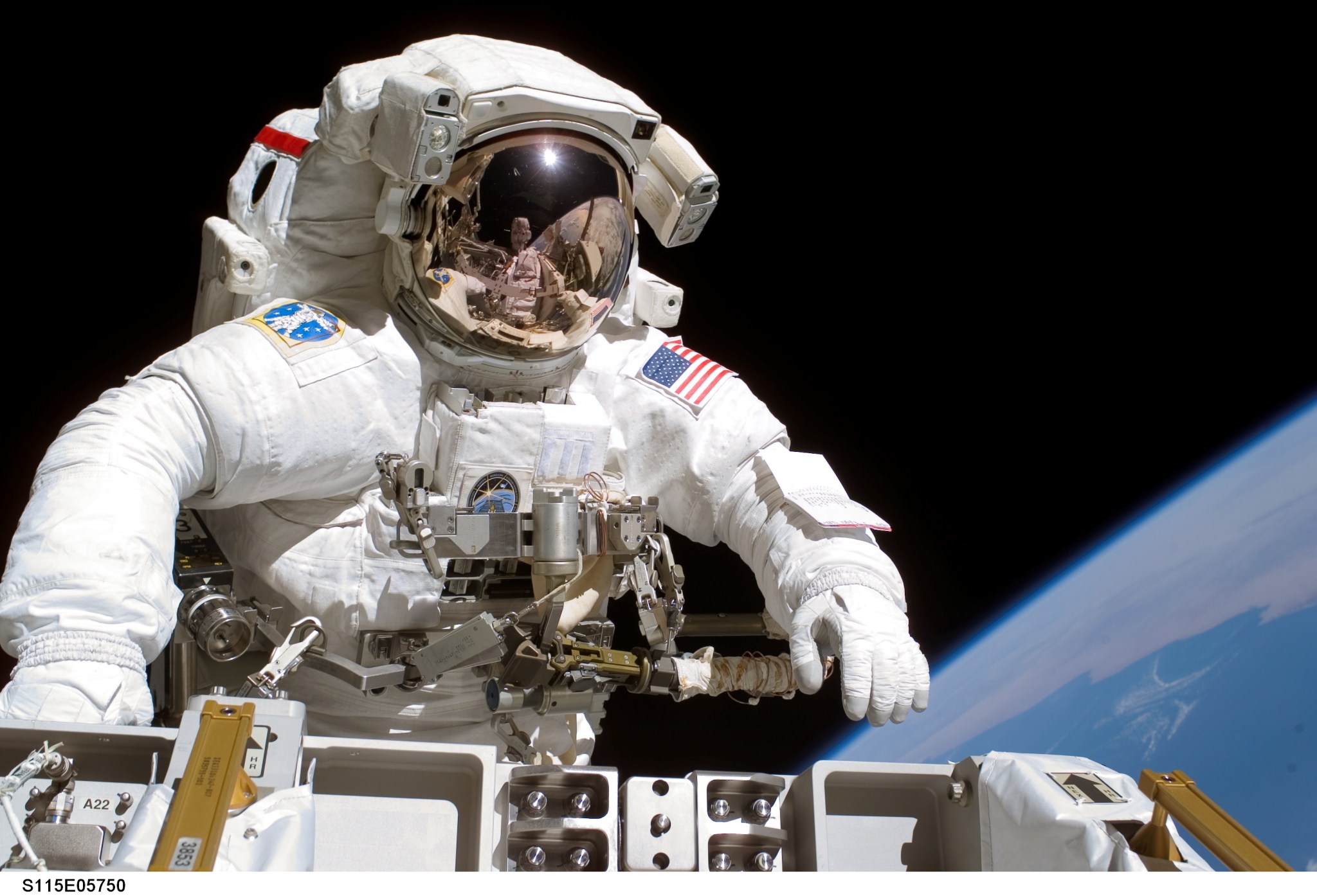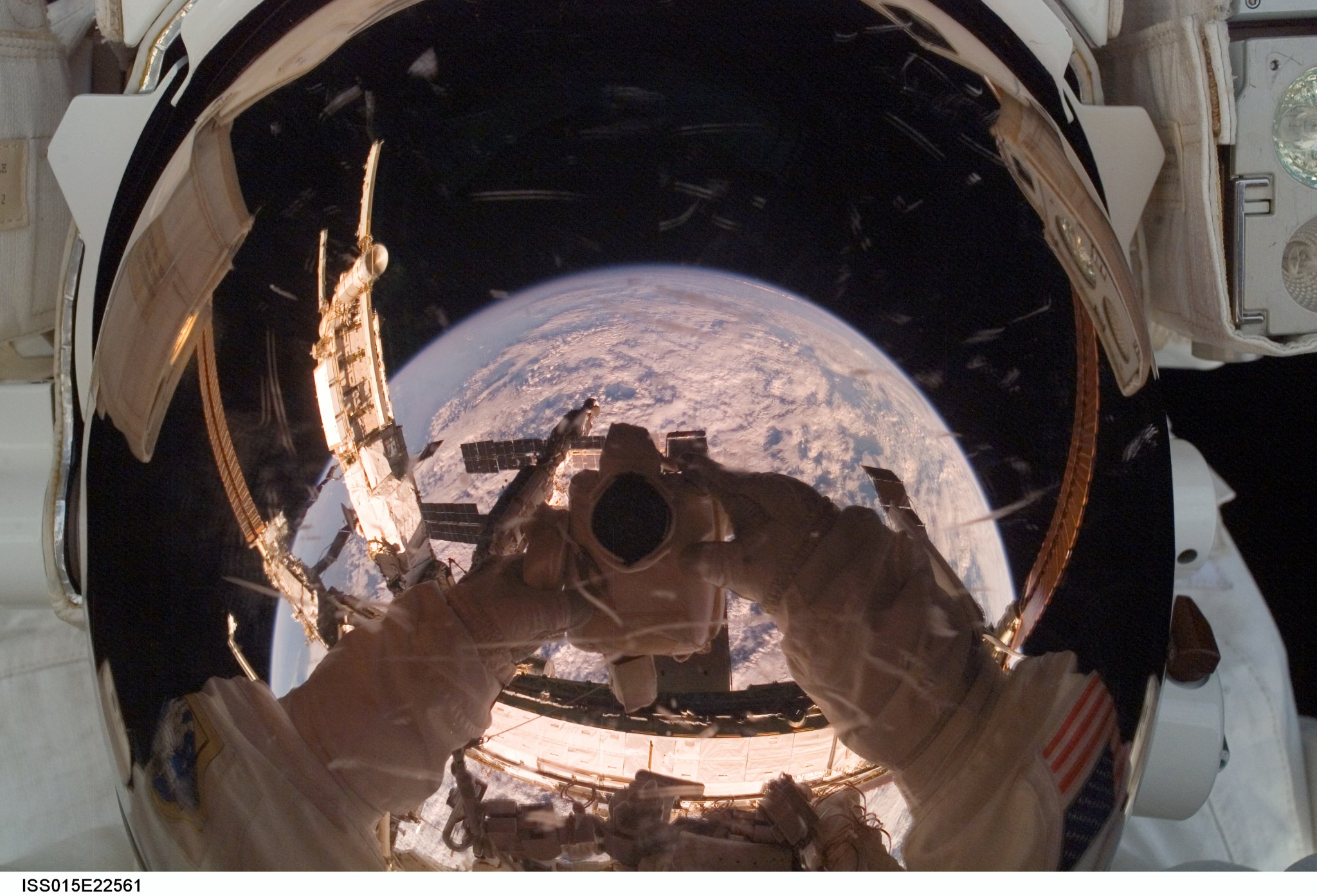Astronaut Clay Anderson, Expedition 15 flight engineer, uses a digital camera to expose a photo of his helmet visor during the mission’s third planned session of extravehicular activity (EVA) as construction continues on the International Space Station. Also visible in the reflections in the visor are various components of the station and a blue and white portion of Earth. During the 5-hour, 28-minute spacewalk, Anderson and astronaut Rick Mastracchio (out of frame), STS-118 mission specialist, relocated the S-Band Antenna Sub-Assembly from Port 6 (P6) to Port 1 (P1) truss, installed a new transponder on P1 and retrieved the P6 transponder.
NASA
Sunlight exposure primarily affects the eye and skin and is mitigated by current standards and countermeasures. An increase in the prevalence of high-power ground-based lasers capable of reaching the ISS, and possibly even the Moon, could cause acute laser exposure damaging hemorrhagic retinal lesions resulting in temporary or permanent damage to vision.

Astronaut Joseph R. Tanner, STS-115 mission specialist, looks toward the digital still camera of his space walk colleague, astronaut Heidemarie M. Stefanyshyn-Piper as the two share extravehicular activity (EVA) duties during the first of three scheduled spacewalks. Stefanyshyn-Piper’s full body is reflected as a tiny figure in Tanner’s helmet visor. The STS-115 astronauts and the Expedition 13 crew members are joining efforts this week to resume construction of the International Space Station.
NASA
Directed Acyclic Graph Files
+ DAG File Information (HSRB Home Page)

































